STM32H7 Microcontroller Features, Development, Datasheet
The STM32 series was developed to meet the growing demand for high-performance and energy-efficient microcontrollers in various industries. The STM32H7 is the most potent member of the widely used STM32 family of 32-bit microcontrollers, which are based on ARM Cortex-M cores. These microcontrollers offer high performance and a wide range of features suitable for various embedded applications. In this article, we'll provide a basic overview of the STM32H7 microcontroller, including its pinout, features, specifications, development, datasheet, etc., to help you quickly understand this Arm® Cortex®-M7 MCU.
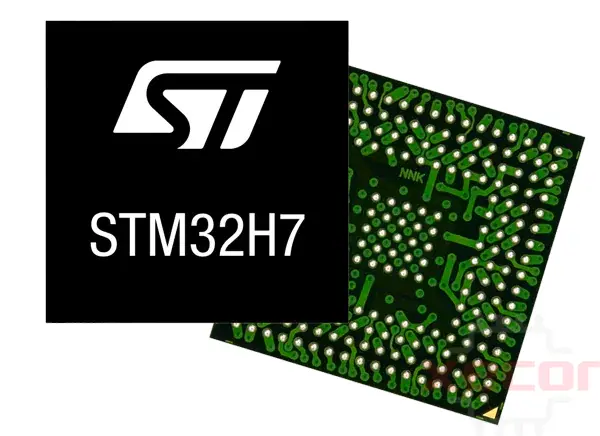
What is STM32H7?
The STM32H7 devices are powered by the high-performance Arm® Cortex®-M7 32-bit RISC core, capable of operating at speeds of up to 480 MHz. This core includes a floating-point unit (FPU) that supports Arm® double-precision (IEEE 754 compliant) and single-precision data processing instructions and data types.
STM32H7 devices are equipped with a full set of DSP instructions and a memory protection unit (MPU) to enhance application security. These devices also feature high-speed embedded memories, including a dual-bank Flash memory of 2 Mbytes, up to 1 Mbyte of RAM (which includes 192 Kbytes of TCM RAM, up to 864 Kbytes of user SRAM, and 4 Kbytes of backup SRAM).
Additionally, STM32H7 devices offer an extensive range of enhanced I/Os and peripherals connected to APB buses, AHB buses, a 2x32-bit multi-AHB bus matrix, and a multi-layer AXI interconnect that supports internal and external memory access. The devices include three ADCs, two DACs, two ultra-low-power comparators, a low-power RTC, a high-resolution timer, 12 general-purpose 16-bit timers, two PWM timers for motor control, and five low-power timers. They also feature a true random number generator (RNG) and a cryptographic acceleration cell.
Moreover, the devices support four digital filters for external sigma-delta modulators (DFSDM) and include standard and advanced communication interfaces.
STM32H7 Pinout
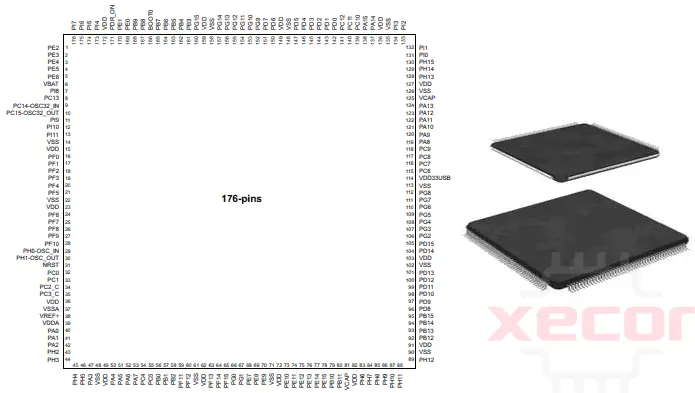
STM32H7 Features
Core
- 32-bit Arm® Cortex®-M7 core with double-precision FPU and L1 cache: 16 Kbytes of data and 16 Kbytes of instruction cache; frequency up to 480 MHz, MPU, 1027 DMIPS/ 2.14 DMIPS/MHz (Dhrystone 2.1), and DSP instructions
Memories
- 2 Mbytes of Flash memory with read-while-write support
- 1 MByte of RAM: 192 Kbytes of TCM RAM (including 64 Kbytes of ITCM RAM + 128 Kbytes of DTCM RAM for time-critical routines), 864 Kbytes of user SRAM, and 4 Kbytes of SRAM in the Backup domain
- Dual mode Quad-SPI memory interface running up to 133 MHz
- Flexible external memory controller with up to 32-bit data bus: SRAM, PSRAM, SDRAM/LPSDR SDRAM, NOR/NAND Flash memory clocked up to 100 MHz in Synchronous mode.
- CRC calculation unit
Security
- ROP, PC-ROP, active tamper, secure firmware upgrade support, Secure access mode
General-purpose input/outputs
- Up to 168 I/O ports with interrupt capability
Low-power consumption
- VBAT battery operating mode with charging capability
- CPU and domain power state monitoring pins
- 2.95 µA in Standby mode (Backup SRAM OFF, RTC/LSE ON)
Debug mode
- SWD & JTAG interfaces
- 4-Kbyte Embedded Trace Buffer
STM32H7 Specifications
| Type | Parameter |
| Core Processor | ARM® Cortex®-M7 |
| Supply Voltage | 3.3V |
| Voltage - Supply (Vcc/Vdd) | 1.62V~3.6V |
| Frequency | 400MHz |
| Memory Size | 2MB |
| Program Memory Type | FLASH |
| Program Memory Size | 2MB 2M x 8 |
| Bit Size | 32 |
| Max Junction Temperature (Tj) | 125°C |
| Operating Temperature | -40°C~85°C TA |
| Package / Case | 176-LQFP |
STM32H7 CAD Model
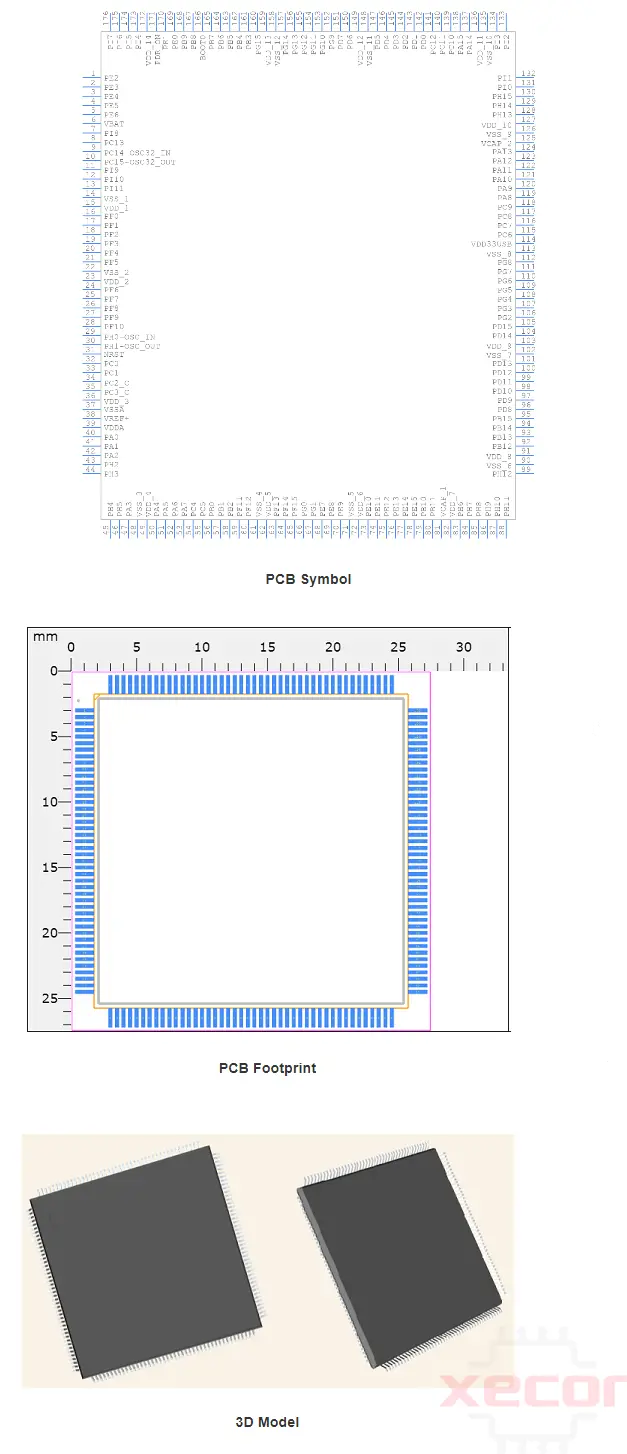
STM32H7 Functional Block Diagram
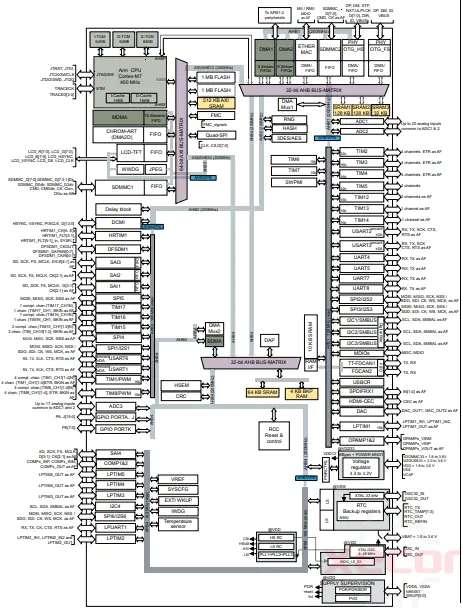
STM32H7 Power Supply Scheme
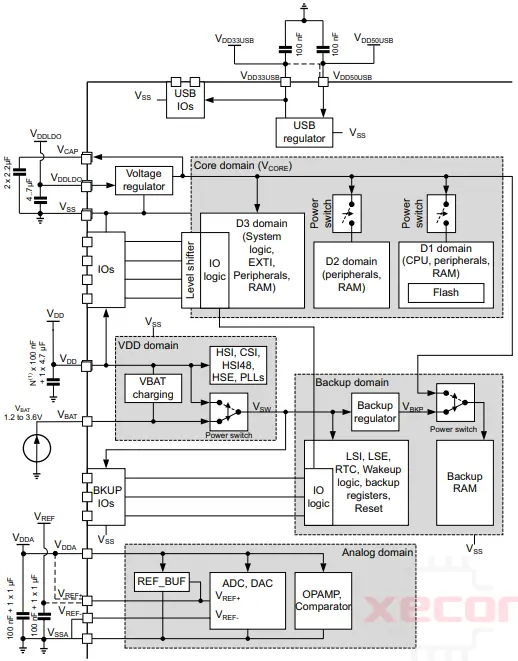
STM32H7 Application
The STM32H7 microcontroller is a versatile device suitable for various applications. Here are some examples:
Enhanced User Interfaces: The STM32H7 series is optimized for high-performance graphics and user interfaces, leveraging the Cortex-M7 and Cortex-M4 cores to deliver exceptional graphical experiences.
Predictive Maintenance: STM32H7 devices with integrated crypto/hash processors support security features like Secure Firmware Install and Secure Boot – Secure Firmware Upgrade, ensuring secure installation of new application codes. This makes them ideal for applications requiring secure and reliable data processing.
Security Applications: The STM32H7 series utilizes ST's Non-Volatile-Memory (NVM) technology, achieving industry-leading benchmark scores for Cortex-M-based microcontrollers. With up to 1327 DMIPS/ 3224 CoreMark executing from embedded Flash memory, they are well-suited for applications demanding high-performance and secure data processing.
STM32H7: Cortex-M Microcontroller Cores Hardware Development
The Cortex-M cores are at the core of STM32H7 hardware development, serving as its processing units.
These cores act as the brains of the STM32H7, determining how it executes instructions.
Essentially, they function as central processing units tailored for microcontrollers.
The STM32H7 series is equipped with two robust cores: the Cortex-M7 and Cortex-M4.
The Cortex-M7 core is a high-performance, energy-efficient core operating at 480 MHz.
This core delivers impressive computational capabilities comparable to some entry-level computer processors.
Similarly, the Cortex-M4 core is another potent and efficient processor, reaching speeds of up to 240 MHz.
These cores empower the STM32H7 to tackle tasks that were previously beyond the scope of microcontrollers.
Consider, for instance, the scenario of developing a drone.
Not just any drone, but one that must process live video feeds, control multiple motors, and maintain flight stability using various sensor inputs.
With the robust processing capabilities of the Cortex-M cores, the STM32H7 is well-equipped to manage such demanding tasks.
STM32H7 and Hardware Development Tools
To fully utilize the STM32H7's capabilities, developers utilize a range of hardware development tools. These tools encompass software for coding and debugging and prototyping boards for physical testing.
One preferred software option is ST's STM32Cube, known for its user-friendly interface that simplifies code writing and debugging for the STM32H7.
For developers aiming to evaluate the practical performance of the STM32H7, the STM32H7 Discovery kit or the Nucleo H743ZI board are highly recommended. These development boards offer an accessible platform to interact with the hardware, eliminating the need for custom PCB designs.
For example, if you're developing an autonomous robot, you could develop and test control algorithms in STM32Cube, assess real-world performance using a Nucleo H743ZI board, and then integrate the STM32H7 into your custom PCB design.
In essence, the STM32H7, alongside its associated tools, provides a seamless path from concept to final product development.
STM32H7 Application Development
Application development for the STM32H7 offers a vast array of possibilities thanks to its robust capabilities.
From automation systems to consumer electronics, the STM32H7 can power a wide range of applications.
The STM32Cube software plays a pivotal role in this development process. Not only does it provide a platform for coding, but it also offers a multitude of libraries and middleware that significantly accelerate the development process.
For example, consider the development of a smart home security system.
By utilizing STM32Cube, developers can use existing libraries for image processing, machine learning, and wireless communication, expediting the project's initial stages.
Given the STM32H7's ability to process inputs from various sensors and control outputs in real-time, a smart security system could detect an intrusion, notify the homeowner via smartphone, and even automatically lock all doors in response, all within moments of the event.
Programming the STM32H7
Development Tools and IDEs
Programming STM32H7 microcontrollers can be done using various Integrated Development Environments (IDEs) such as Keil, IAR Embedded Workbench, and STM32CubeIDE. These IDEs provide a comprehensive set of tools for writing, compiling, and debugging code for STM32 microcontrollers.
Using STM32CubeMX for Initialization Code Generation
STM32CubeMX is a graphical tool that allows developers to configure STM32 microcontrollers and generate initialization code quickly. It helps in setting up pin configurations, clock settings, and peripheral configurations, saving developers time and effort in the initialization process.
Overview of HAL (Hardware Abstraction Layer) Libraries
The Hardware Abstraction Layer (HAL) libraries provided by STMicroelectronics offer a high-level interface for interacting with the hardware peripherals of STM32 microcontrollers. HAL libraries simplify the process of writing code for accessing and controlling peripherals such as GPIO, UART, SPI, and I2C, making it easier for developers to work with STM32 microcontrollers.
STM32H7 Advantage
The STM32H7 microcontroller simplifies application upgrades for developers by offering flexible use of its two cores. Developers can migrate legacy code to the STM32H7 Cortex-M4 and run the new GUI on the Cortex-M7, enabling the addition of sophisticated user interfaces to applications that previously ran on a single-core Cortex-M4 MCU, such as a motor drive. The dual-core architecture simplifies code development.
For security, the MCUs come with pre-installed keys and native secure services, including Secure Firmware Install (SFI), which allows customers to order standard products from anywhere in the world and have encrypted firmware delivered to an external programming company without exposing unencrypted code. Over-the-air (OTA) upgrades and patches are secured with built-in support for Secure Boot and Secure Firmware Update (SB-SFU).
The MCUs offer advanced features such as Error Code Correction (ECC) for all Flash and RAM to increase safety, multiple advanced 16-bit analog-to-digital converters (ADCs), and the ability to withstand external ambient temperatures up to 125°C, making them suitable for operation in severe environments. Multiple FD-CAN controllers and an Ethernet Controller provide communication gateway capabilities. The latest high-resolution timer helps generate precision waveforms.
For development, ST has expanded the STM32Cube ecosystem by adding STM32CubeH7 firmware modules with application source code, including graphical solutions based on TouchGFX and the STemWin graphical-stack library. New Evaluation, Discovery, and Nucleo boards are also available. Developers can benefit from all the standard elements of the STM32Cube development environment, including the ST-MC-SUITE motor-control toolkit, STM32Cube-AI machine-learning toolkit, STM32CubeMX, STM32CubeProgrammer, and certified partner solutions for STM32.
STM32H7 Package
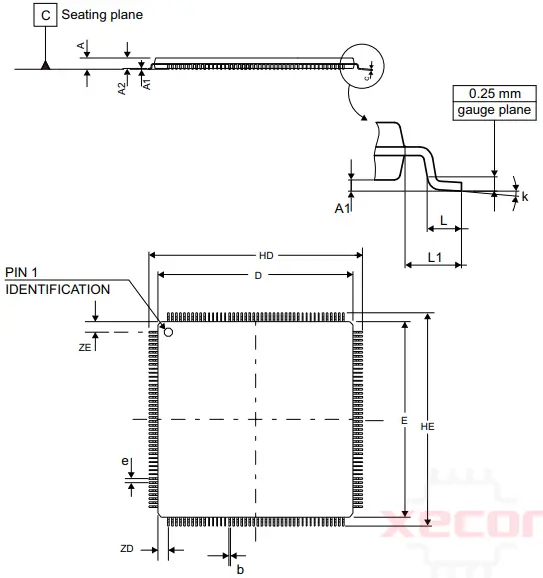
STM32H7 Package Recommended Footprint
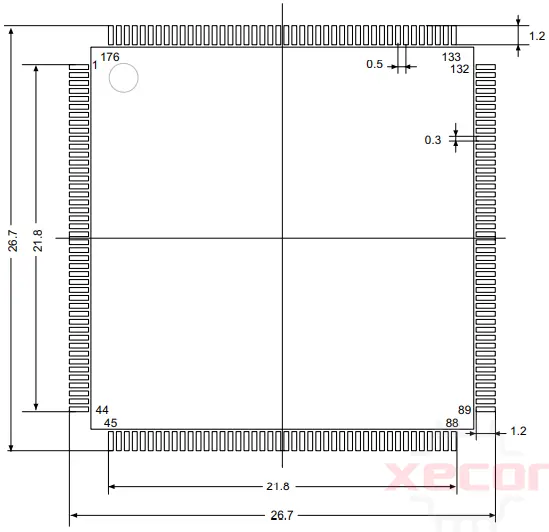
STM32H7 Marking Example
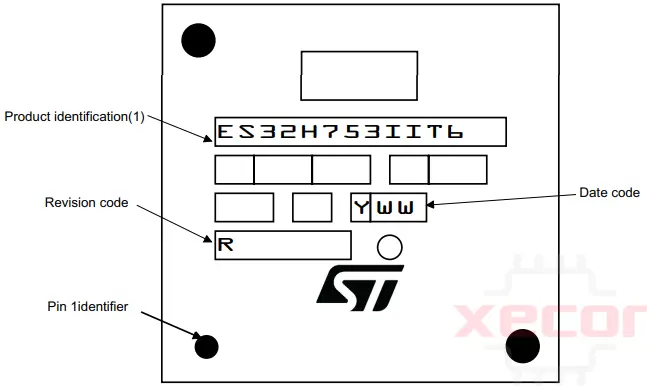
STM32H7 Manufacturer
STMicroelectronics is a leading manufacturer in the electronics industry, known for its wide range of semiconductor products. One of its notable products is the STM32H7 microcontroller series, which offers high performance and advanced features. STMicroelectronics is recognized for its innovative technology and reliable products, making it a preferred choice for many electronic applications. The STM32H7 series is widely used in various industries, including automotive, industrial, and consumer electronics, due to its versatility and performance.
STM32H7 Datasheet
Download STM32H7 Datasheet PDF.
STM32H7 Development Boards & Discovery Kits
- STM32 Nucleo-144 Dev Board with STM32H743ZI MCU: This development board provides an affordable and flexible platform for trying out new concepts and building prototypes with the STM32H743ZI microcontroller. It is suitable for beginners and experienced users alike, offering a variety of peripherals and expandability options with specialized application hardware boards.
- STM32H7B3I-DK Discovery Kit: The Discovery Kit is a high-end development platform for the STM32H7 Series. It features the STM32H7B3I microcontroller, which has an Arm Cortex-M7 and Cortex-M4 dual-core processor. The kit includes a rich set of peripherals, user buttons, an OLED color display, and more, making it ideal for high-performance embedded application development.
- STM32H735G-DK Discovery Kit: This kit is designed to be a comprehensive tool for developers, providing access to the full range of peripherals on the STM32H735IGK6 microcontroller. It offers a wide range of features to facilitate the evaluation and development of applications.
- STM32H745I-DISCO Discovery Kits: These kits serve as complete demonstration and development platforms for the STM32H745XI microcontrollers. They feature full-speed USB, a Gigabit Ethernet port, stereo audio input and output, camera support, and more. The kits provide an affordable and flexible platform for comprehensive development and testing.
- STM32H747I-DISCO Discovery Kit: This kit offers a full range of features for developing and sharing applications. It includes the STM32H747XI microcontroller, a 4" capacitive touch LCD, Ethernet connectivity, and more. It enables quick development of applications that leverage the power and performance of the STM32H7 microcontroller.
- STM32H750B-DK Discovery Kit: This kit is a comprehensive tool for exploring the features of the STM32H750 Series microcontrollers. It includes an embedded STLINK debugger/programmer, status LEDs, user input push buttons, a USB OTG HS connector, Ethernet connectivity, and more. Developers can test and prototype applications with the STM32H750 in a user-friendly environment.
STM32H7 vs. STM32F7
Here's the comparison of the STM32F7 and STM32H7 microcontroller series:
| Characteristic | STM32F7 | STM32H7 |
| Processing Power | Single Cortex-M7 core | Dual Cortex-M7 and Cortex-M4 cores |
| Clock Speed | Competitive, but generally lower than STM32H7 | Higher, enabled by dual-core architecture |
| Performance | Slightly lower, especially in intensive tasks | Superior, especially in demanding applications and real-time tasks |
In summary, the STM32H7 series offers superior performance compared to the STM32F7 series, thanks to its dual-core architecture, higher clock speeds, and enhanced processing power.
STM32H7 vs. Raspberry Pi
Here's a comparison of the STM32H7 microcontroller and the Raspberry Pi:
| Characteristic | STM32H7 | Raspberry Pi |
| Type | Microcontroller | Single-Board Computer |
| Processing Power | Dual-core (Cortex-M7 and Cortex-M4) with up to 480 MHz and 240 MHz | ARM-based processors, offering higher processing power |
| Application Range | High-performance graphics, user interfaces, secure data processing | Wide range of applications including desktop computing, IoT |
| Core Architecture | ARM Cortex-M7 and Cortex-M4 cores | ARM-based processors |
| Clock Speed | Up to 480 MHz for Cortex-M7, up to 240 MHz for Cortex-M4 | Varies depending on the model, but generally higher than 1 GHz |
| Memory | Varies depending on the model | Varies depending on the model, up to 8 GB RAM |
| Connectivity | Various interfaces like USB, Ethernet, CAN, etc. | Ethernet, Wi-Fi, Bluetooth, USB, GPIO, Camera, Display |
| Power Consumption | Varies depending on the model | Varies depending on the model, but generally higher than microcontrollers |
In summary, the Raspberry Pi offers higher processing power and a wider range of applications compared to the STM32H7 microcontroller, which is designed for applications that require high-performance graphics, secure data processing, and user interfaces.
Related Article: STM32 vs. RP2040
Conclusion
The STM32H7 MCU is blurring the line between microcontrollers and high-performance microprocessors, standing out as one of the fastest and most advanced microcontrollers available. In a tech-driven world where integration is key, microcontrollers like the STM32H7 are enabling exciting innovations.
Gone are the days of simple tasks; today's microcontrollers are the core of complex systems, from autonomous vehicles to smart factories. With its potent Cortex-M cores and versatile hardware and application development tools, the STM32H7 is at the forefront of this evolution.
While the STM32H7 might be excessive for many products, it's an excellent choice for those requiring high processing speeds. It offers a simpler implementation than custom microprocessor designs, making it a fantastic solution for various applications.
The STM32H7 isn't just a powerful microcontroller; it's a catalyst for innovation, pushing the boundaries of hardware and application development. Its impact is being recognized worldwide.
Read More
FAQ
-
Does STM32H7 have FPU?
Yes, the STM32H7 has a double-precision floating-point unit.
-
How fast is the STM32H7?
The STM32H7 can achieve clock speeds of up to 480 MHz.
-
What is the frequency of STM32H7?
The STM32H7 series comprises three product line groups: Dual-core lines featuring Arm Cortex-M7 and Cortex-M4 cores, capable of running at speeds up to 480 MHz and 240 MHz, respectively. This enables enhanced processing capabilities and application partitioning.
-
What is the maximum SPI speed for STM32H7?
200 MHz.
-
What is the maximum speed of UART in STM32H7?
Usart_ker_ck_pres/16.
-
Why is STM32 so popular?
STM32 processors offer robust performance through high-speed processor cores, generous memory capacities, and rapid data processing abilities, making them well-suited for applications demanding intricate and intensive computations.
-
What is the most powerful STM32 microcontroller?
The Arm® Cortex®-M7 based STM32H7 MCU series.

 Prof. David Reynolds
Prof. David Reynolds
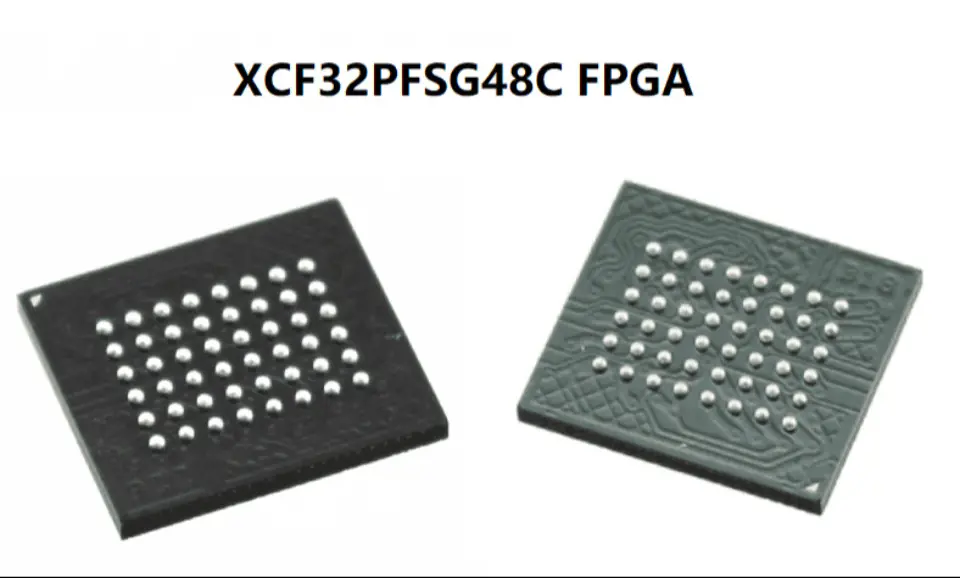
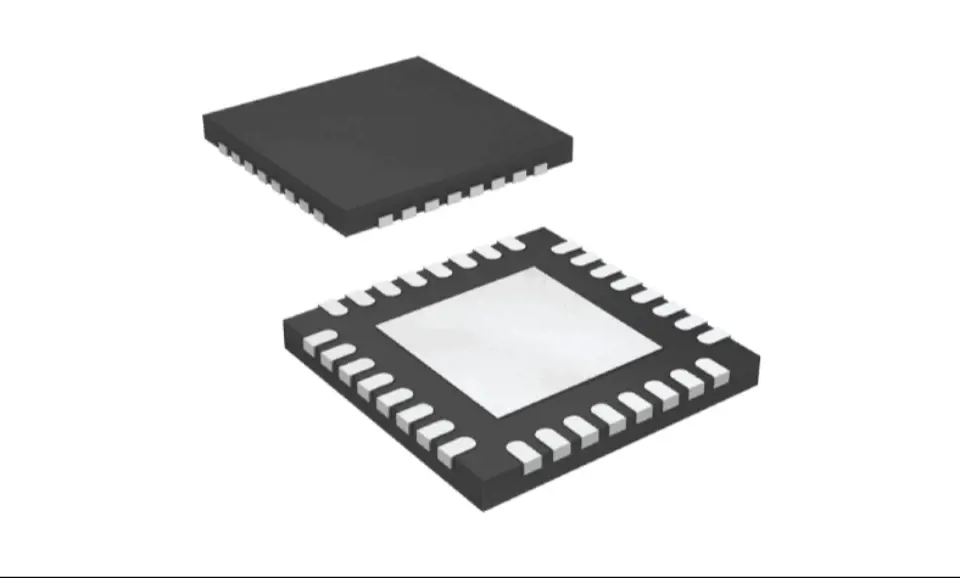
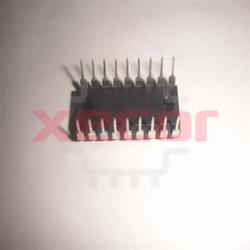
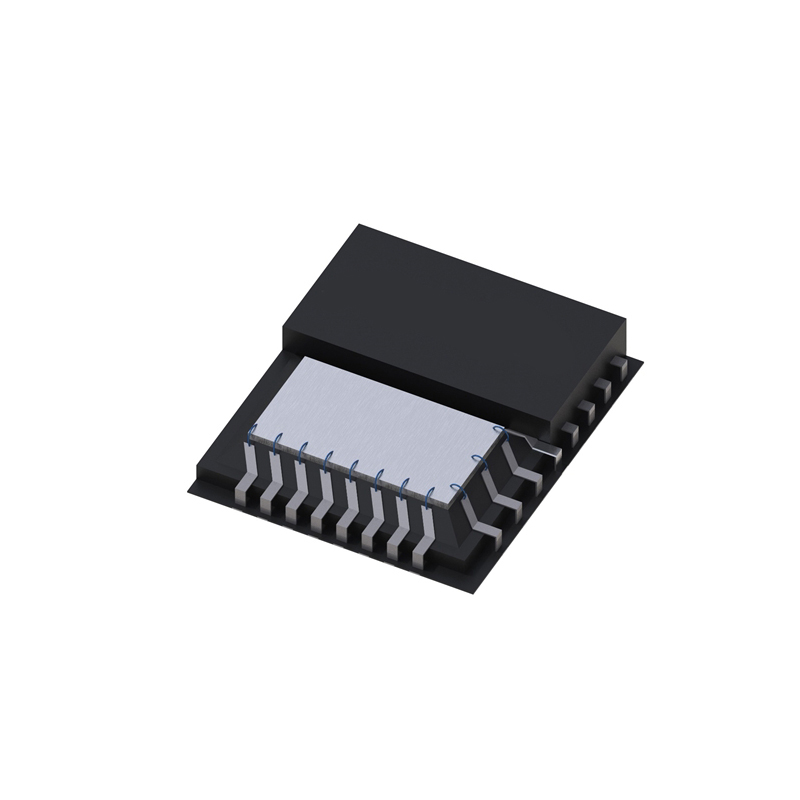
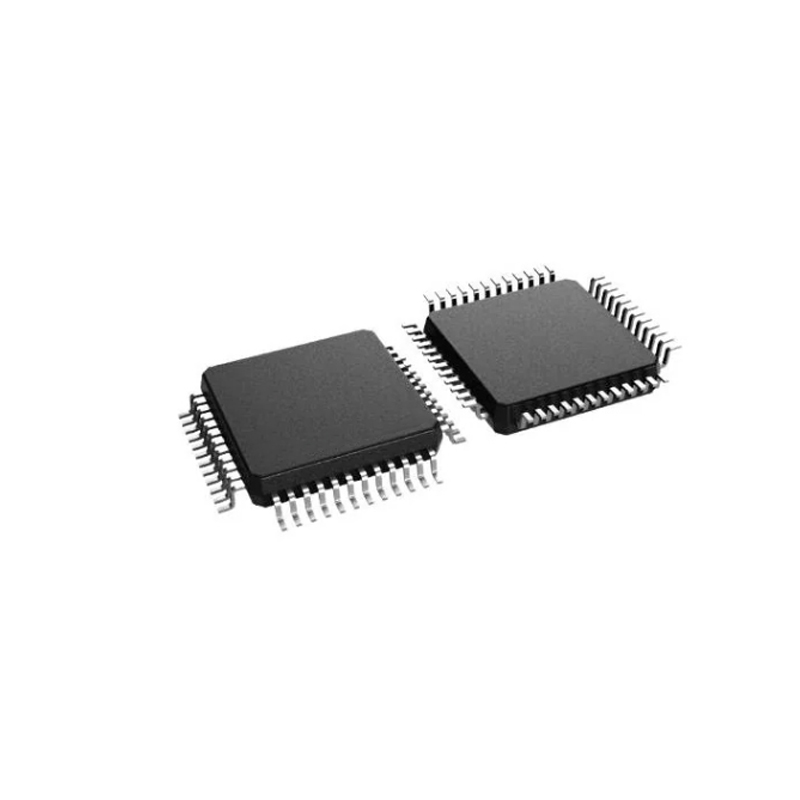
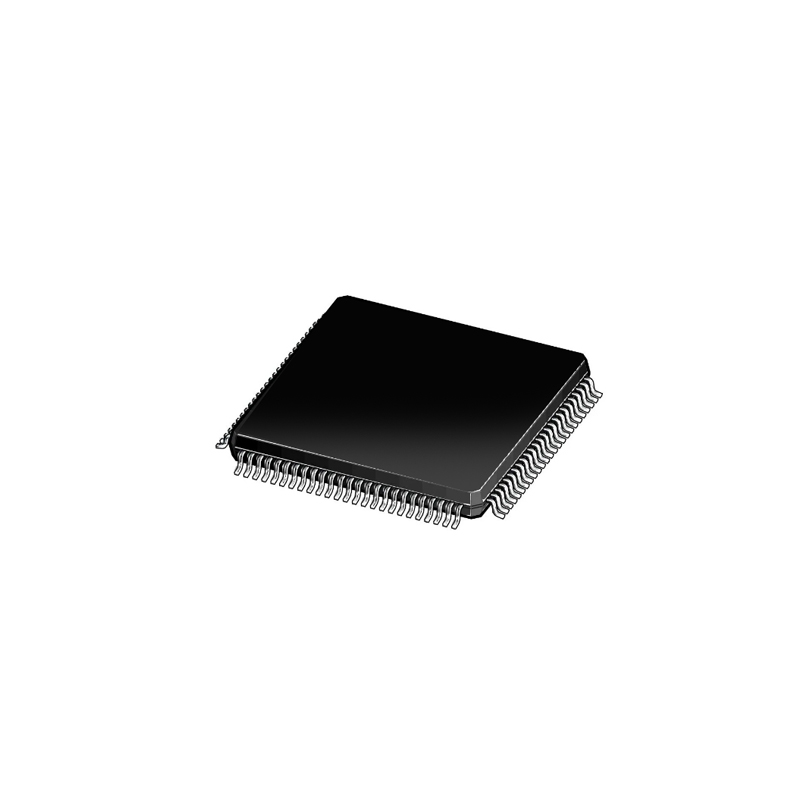
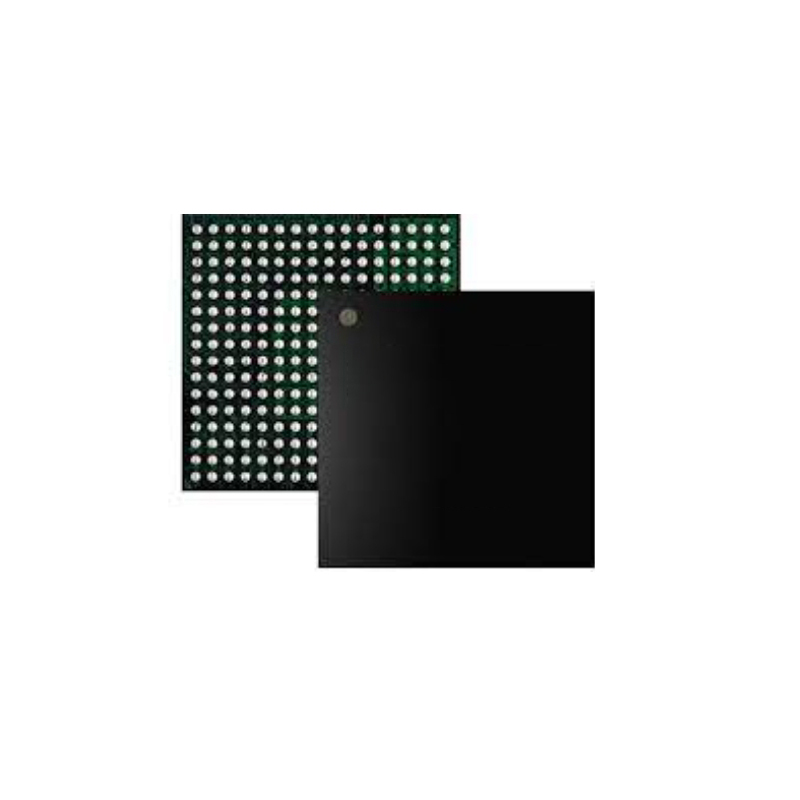
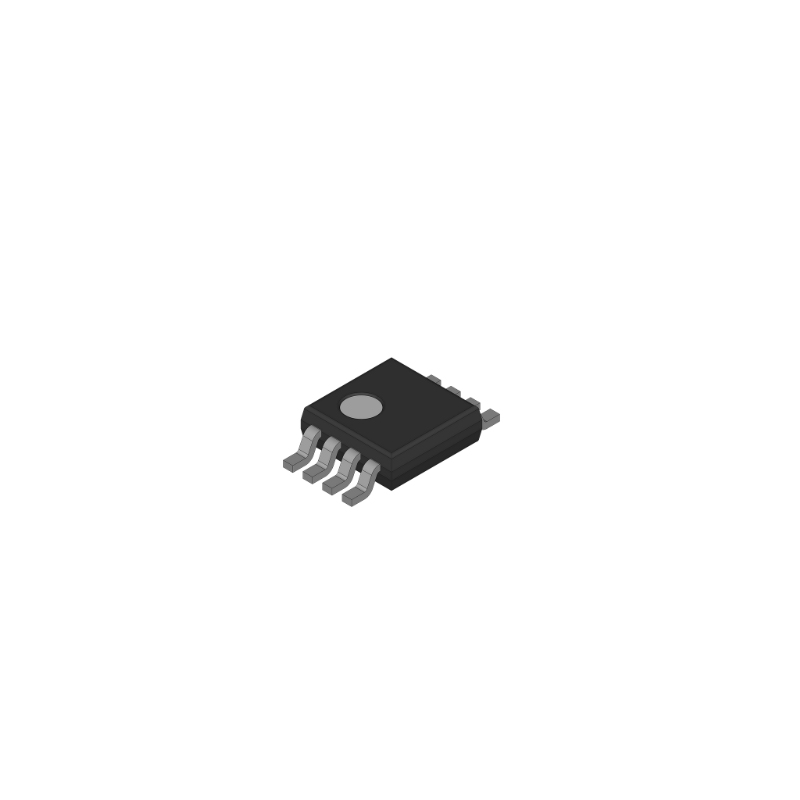
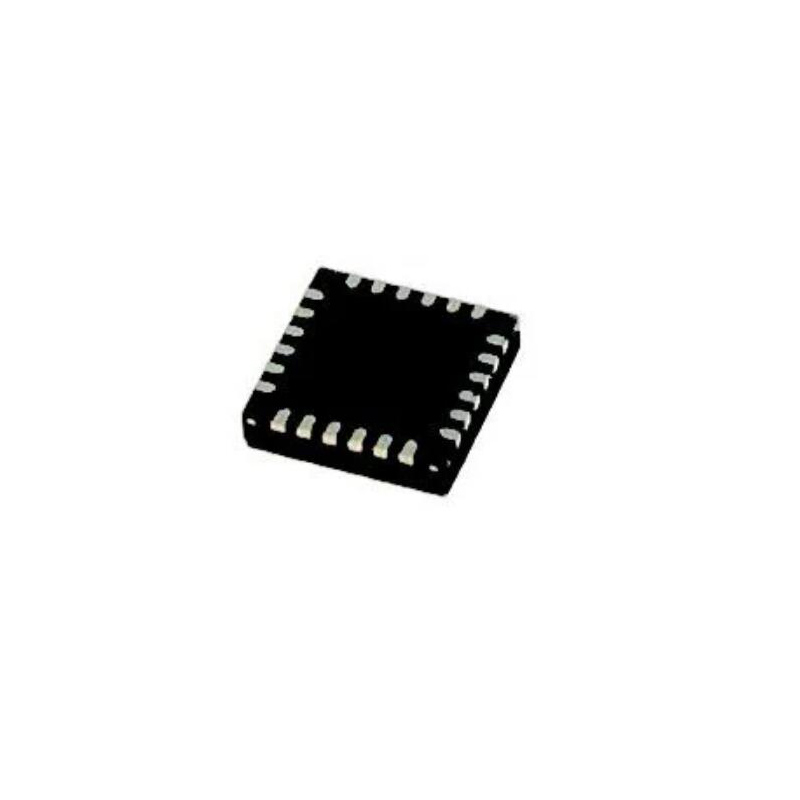
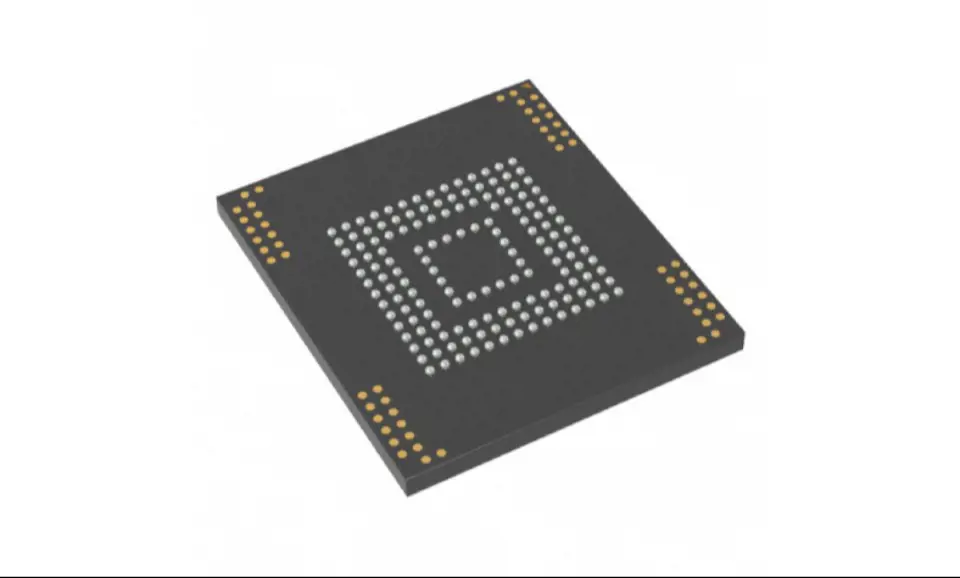
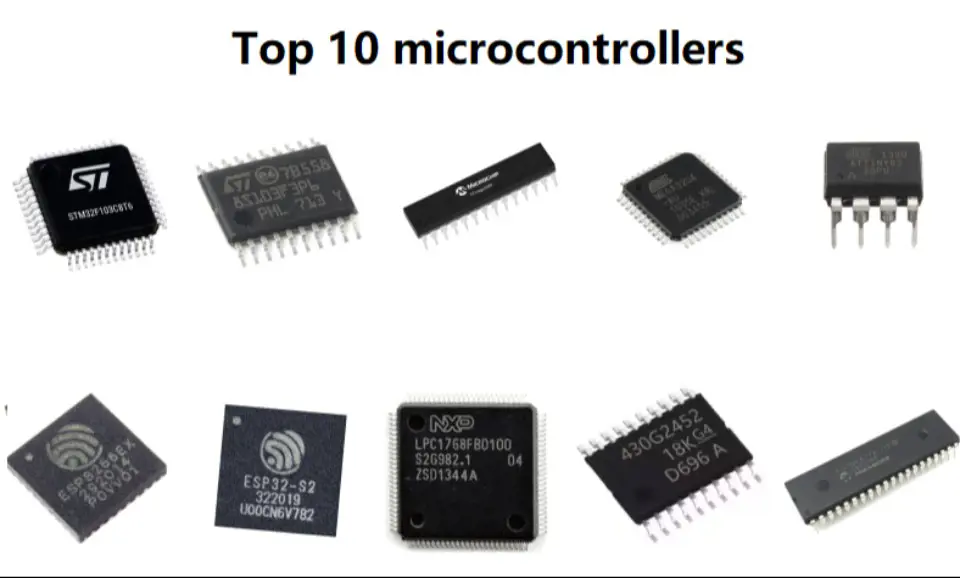
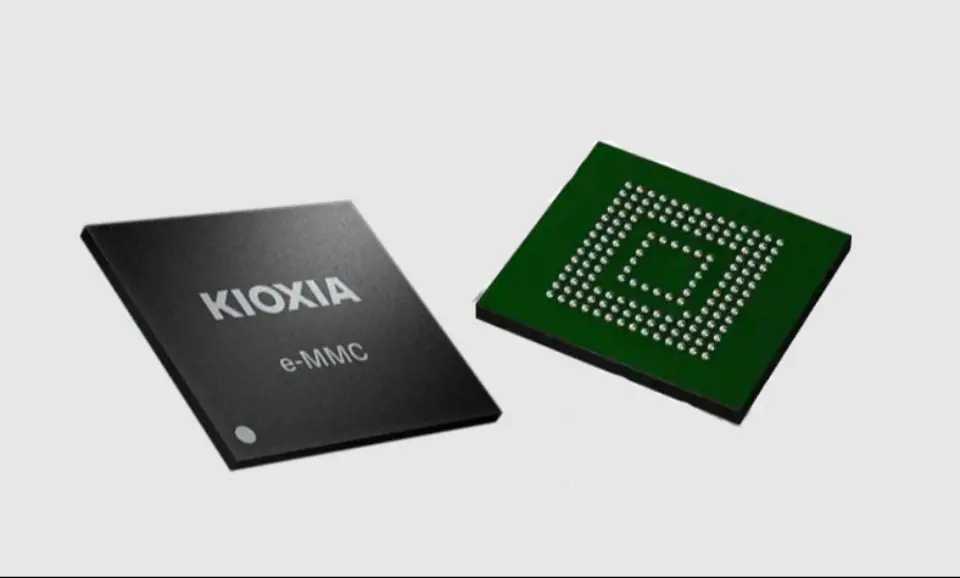
Still, need help? Contact Us: [email protected]